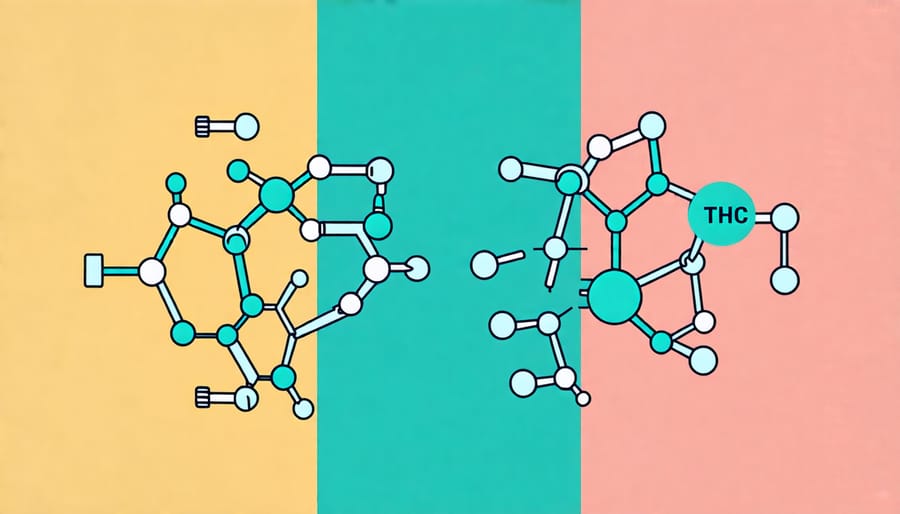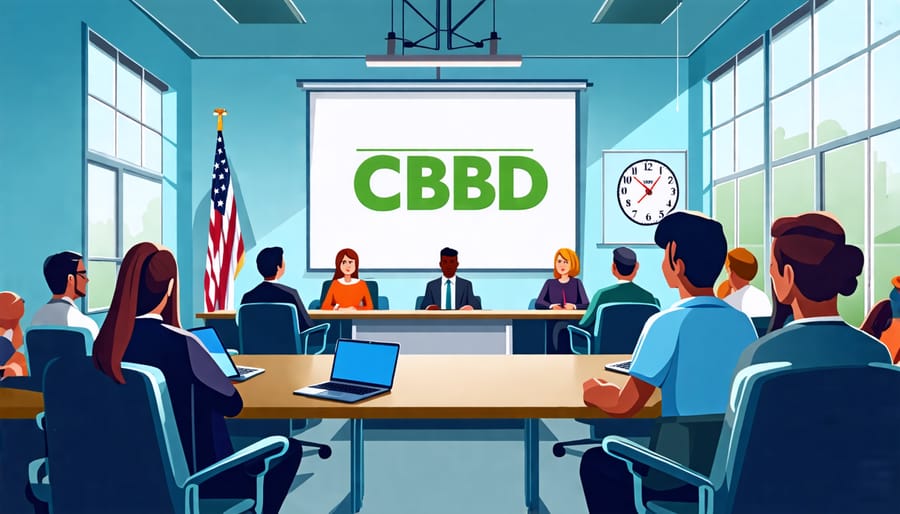The debate over CBD and THC products in educational settings continues to evolve, raising important questions about student safety, mental health, and academic performance. As schools across Canada grapple with changing attitudes and regulations around cannabis, such as delta 10 gummies, administrators and policymakers face complex decisions about appropriate policies and protocols. This examination explores the current landscape of CBD in schools, analyzing both potential benefits and risks while considering perspectives from educators, parents, and health professionals.
Understanding CBD and THC Gummies
CBD vs. THC: Key Differences
Cannabidiol (CBD) and tetrahydrocannabinol (THC) are two prominent compounds found in cannabis, each with distinct effects and legal standings pertinent to educational settings. CBD is non-psychoactive, meaning it does not produce the “high” associated with cannabis, and is often explored for its potential therapeutic benefits such as reducing anxiety and inflammation. In contrast, THC is psychoactive and can affect cognitive function and perception, which raises concerns in school environments. Legally, in Canada, both CBD and THC are regulated under the Cannabis Act, but the presence of THC involves stricter controls due to its mind-altering effects. Understanding these differences is crucial for educators and policymakers to inform their decisions related to the use and discussion of these compounds in schools, ensuring any integration aligns with safety and legal standards.

Rise of THC Gummies
The rising popularity of THC gummies represents a significant shift in the consumption of cannabis products. Initially favored for their discretion and ease of use, gummies have become a widespread choice among consumers seeking the psychoactive effects of THC. This trend has important implications for Canadian schools, where the presence and influence of cannabis can affect educational environments. As educators and policymakers grapple with understanding these products, the key challenge lies in addressing the potential risks they pose to student populations. Heightened awareness and clear regulatory strategies are essential to mitigate any negative impact while fostering an informed dialogue about responsible consumption. This dialogue is crucial as schools aim to balance safety with evolving societal norms regarding cannabis use.
Potential Educational Impacts
Reported Benefits
Some studies suggest that CBD may offer several potential benefits for students, particularly in the realm of mental health and cognitive function. One reported advantage is the reduction of anxiety, which can play a significant role in easing school-related stress and enhancing overall academic performance. CBD’s anxiolytic properties could help in creating a calmer learning environment, enabling students to better handle pressure from exams and social interactions. Furthermore, improved concentration is another cited benefit. It is proposed that CBD may aid in maintaining focus by influencing certain neurotransmitter systems in the brain, thereby potentially enhancing students’ attention span and their ability to process information effectively.
While the evidence is still evolving, the implications of such benefits suggest a promising avenue for educational enhancement, provided legal and policy frameworks are diligently observed. As the conversation around these potential applications continues, educators and policymakers must prioritize evidence-based insights to ensure that school environments remain safe and conducive to learning. Comprehensive research is crucial in determining the validity and scope of these benefits, safeguarding students’ well-being while exploring CBD’s role within educational settings. As these discussions progress, stakeholders will need to remain informed about both the potential and limitations of CBD use in schools.

Concerns and Risks
The integration of CBD in educational settings presents several concerns and risks that need careful consideration. One of the primary concerns is its potential impact on students’ mental health. While some studies suggest CBD might have therapeutic benefits, it can also interact differently with young brains, potentially affecting cognitive functioning and emotional well-being. For example, there is a risk of developing anxiety or depressive symptoms if not properly monitored and administered.
Another significant concern revolves around safety. The presence of CBD in schools could lead to unintended exposure or misuse by students. Clear guidelines for storage, administration, and supervision are essential to prevent accidental ingestion or inappropriate distribution among students. Additionally, the varying quality and concentration of CBD products available in the market pose another layer of risk, potentially leading to adverse reactions or side effects.
From a legal standpoint, there are complexities surrounding the use of CBD in schools, particularly in terms of compliance with federal and provincial regulations. Schools need to navigate legal frameworks carefully to ensure they do not inadvertently violate laws concerning controlled substances. This situation is compounded by the lack of standardization in CBD products, which complicates assurance of product safety and legality.
These concerns highlight the necessity for comprehensive policies and safety protocols that protect students while addressing the potential benefits of incorporating CBD into educational environments.
Current Policies and Regulations
Federal and Provincial Laws
In Canada, the legal framework surrounding CBD and THC in educational institutions is shaped by both federal and provincial laws, presenting a complex landscape for stakeholders. Federally, the Cannabis Act governs the use of cannabis, including products containing CBD and THC, distinguishing between medical and recreational usage. This legislation allows CBD products, provided they have 0.3% THC or less. However, the presence of any cannabis products in schools remains contentious due to their psychoactive potential. Provinces may implement further restrictions, impacting the availability and acceptance of CBD within school environments. Particularly in the context of exploring alternative supports for students’ mental wellness, such initiatives are often viewed alongside strategies like mental health days. Policymakers and educators must navigate varying provincial policies, weighing the benefits against legal stipulations and potential risks. A balanced approach remains essential to ensure compliance and the safeguarding of student well-being, making this an evolving discussion point in Canadian educational settings.

School Policies and Protocols
Individual school districts across Canada are navigating the complex landscape of CBD and THC product presence in educational settings with varied approaches. Regulations differ widely, as schools aim to balance potential therapeutic benefits against safety and compliance with federal and provincial laws. Some districts have implemented explicit bans on these substances, aligning policies with existing frameworks that prohibit drugs on school grounds. Others are in exploratory phases, considering policies that might allow limited use of CBD for medical purposes, contingent upon parental consent, medical documentation, and thorough risk assessments. It’s crucial for school authorities to remain informed on the evolving legal context, noting Health Canada’s guidelines and ensuring alignment with public health recommendations. Engaging with parents and community stakeholders is essential in crafting policies that safeguard student well-being while addressing potential CBD benefits. Continued monitoring and evaluation of these measures will be vital as districts refine their approaches to managing CBD and THC products in schools, ensuring policies remain relevant and evidence-based.
Stakeholder Perspectives
Educator and School Staff Views
Educators and school staff play a critical role in managing the impact of CBD and THC gummies in educational settings. While some teachers acknowledge potential benefits, such as reduced anxiety and improved focus among students, concerns about misuse and unclear regulation persist. Many educators stress the importance of clear guidelines and education strategies to effectively address this issue in schools. Key challenges include distinguishing between THC and CBD products and understanding their distinct effects. Staff emphasize the need for comprehensive training sessions to better inform stakeholders and equip them with the knowledge necessary to educate about safety. Ensuring open dialogue with students and parents and collaborating with policymakers is crucial in balancing potential benefits against risks, ultimately creating a safe and supportive learning environment.
Parent and Community Opinions
Parental and community opinions on CBD in educational settings largely center around safety concerns and the impact on minors’ cognitive development. Many parents worry about potential exposure to substances that may not be fully understood, particularly when their effects on young minds remain under-researched. While some support the therapeutic benefits of CBD for specific health conditions, there is trepidation about its unregulated use in school environments, fearing it may inadvertently normalize consumption. Communities often voice the need for clearer policies and comprehensive education about CBD’s potential risks and benefits. Such discourse underscores the importance of informed decision-making by school administrators to ensure both educational integrity and student well-being, recognizing the complex balance between accessibility to health alternatives and safeguarding youth.
Future Directions and Considerations
As the discourse around CBD and THC gummies continues to evolve, future directions for policy and educational approaches in Canada will require careful consideration. Policymakers and educators are expressing the necessity for robust regulatory frameworks that prioritize student safety and well-being. Comprehensive educational programs are crucial to inform both students and parents about the potential benefits and risks associated with these substances. There is a growing need for evidence-based studies that delve into the long-term effects of CBD and THC usage in adolescents, providing a foundation for informed decision-making.
Stakeholders, including educational bodies and health professionals, must collaborate to establish guidelines that clarify the legal distinctions between CBD and THC products, especially regarding their permissible use in school settings. Educational institutions may also need to develop strategies to deal with scenarios involving consumption, ensuring that any intervention is grounded in health-oriented support rather than punitive measures.
In parallel, as business leaders innovate with new products, it is essential to maintain an open dialogue that considers the perspectives of all involved, ensuring that new developments are in line with both educational priorities and public health concerns. Moving forward, balancing innovation with caution will be key to navigating this complex landscape effectively.
Conclusion
In conclusion, navigating the use of CBD and THC gummies in the educational sector involves weighing their potential educational benefits against safety and regulatory challenges. The key discussion points emphasize the importance of clear legal frameworks and comprehensive policies to ensure that these products are used responsibly and appropriately in schools. Stakeholders, including educators and policymakers, must prioritize creating an environment that prioritizes student well-being while also exploring innovative solutions to enhance learning experiences. The balance between educational efficacy and safety is paramount, necessitating ongoing research and dialogue among all interested parties. As we move forward in shaping future educational landscapes, it is crucial to consider how such substances might play a role in driving education forward while ensuring student safety remains uncompromised. This balanced approach will help construct a more informed perspective on integrating CBD and THC into educational settings across Canada.
